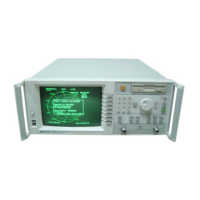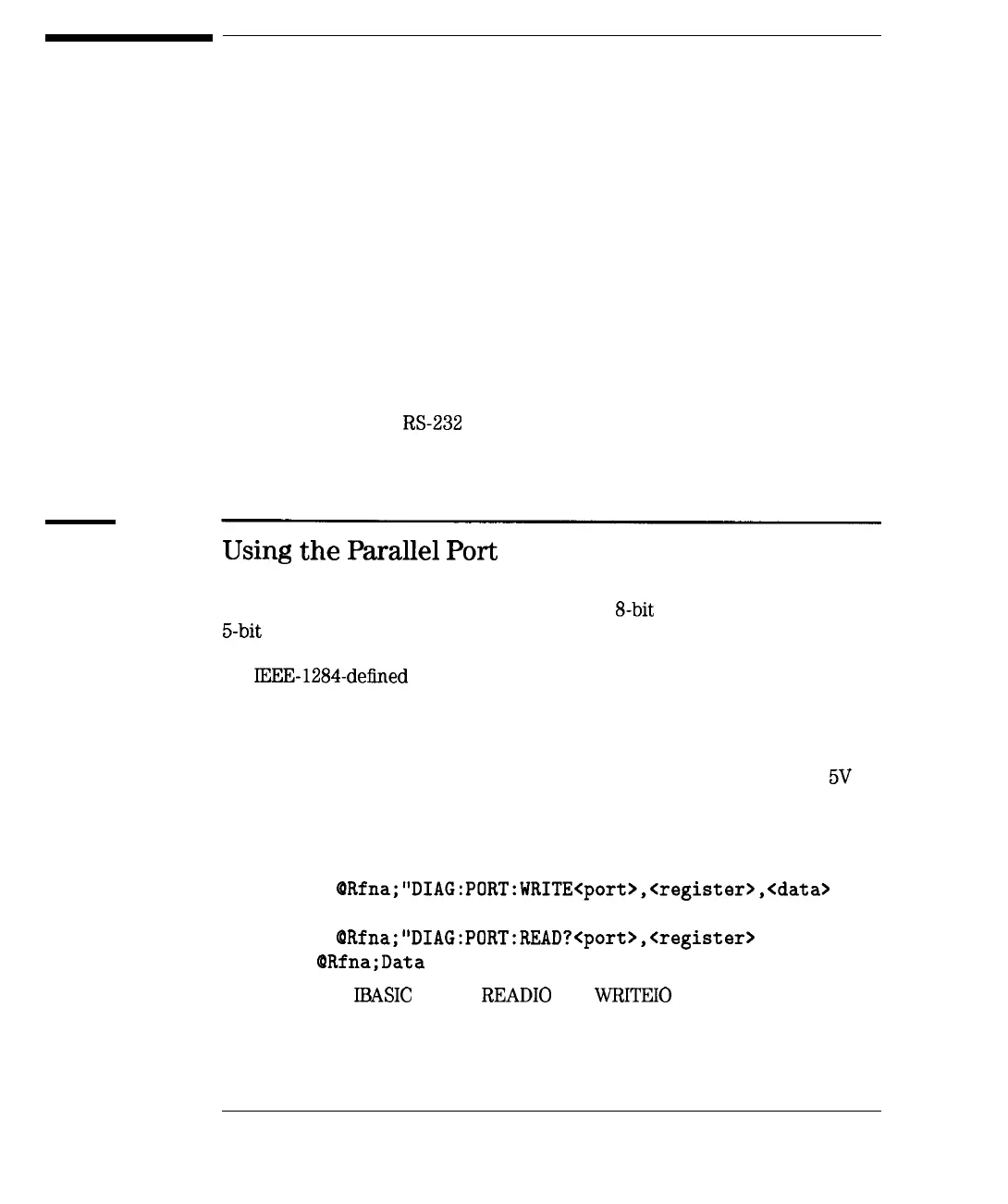I
-
I
-
Controlling Peripherals
The analyzer lets you access its rear panel interface ports from your
measurement control program. Using this capability, you can communicate
with peripherals such as material handlers, custom DUT interface circuits,
external switch boxes, and printers.
Communication with the DIN KEYBOARD interface, the USER TTL, and
LIMIT TEST TTL connectors is described in detail in the earlier section titled
“Operator Interaction.” This section will focus on use of the Centronics
parallel port and the
RS-232
serial port.
Using
the
Parallel
Port
The analyzer’s parallel port can be used as an
8-bit
TTL output port and as a
5-bit
TTL input port. The eight TTL outputs are for output only, and cannot
be read or used as bidirectional I/O lines. The parallel port does not support
the
IEEE-1284-defined
Extended Capabilities Port (ECP) Mode or Enhanced
Parallel Port (EPP) Mode.
The outputs signals are driven by standard TTL drivers. They should be
buffered for heavy duty applications, to avoid damaging the analyzer. The
inputs are standard TTL inputs, designed to accept signals in the OV to
5V
range.
The analyzer provides two ways to access the parallel port. You can use the
SCPI commands
OUTPUT
BRfna;“DIAG:PORT:WRITE
<port>,<register>,<data>
and
OUTPUT
QRfna;“DIAG:PORT:READ?
<port>,<register>
ENTER
@Rfna;Data
-
or you can use
IBASIC
and its
READ10
and
WRITE10
commands. See the
following tables for more information.
7-54
I-

